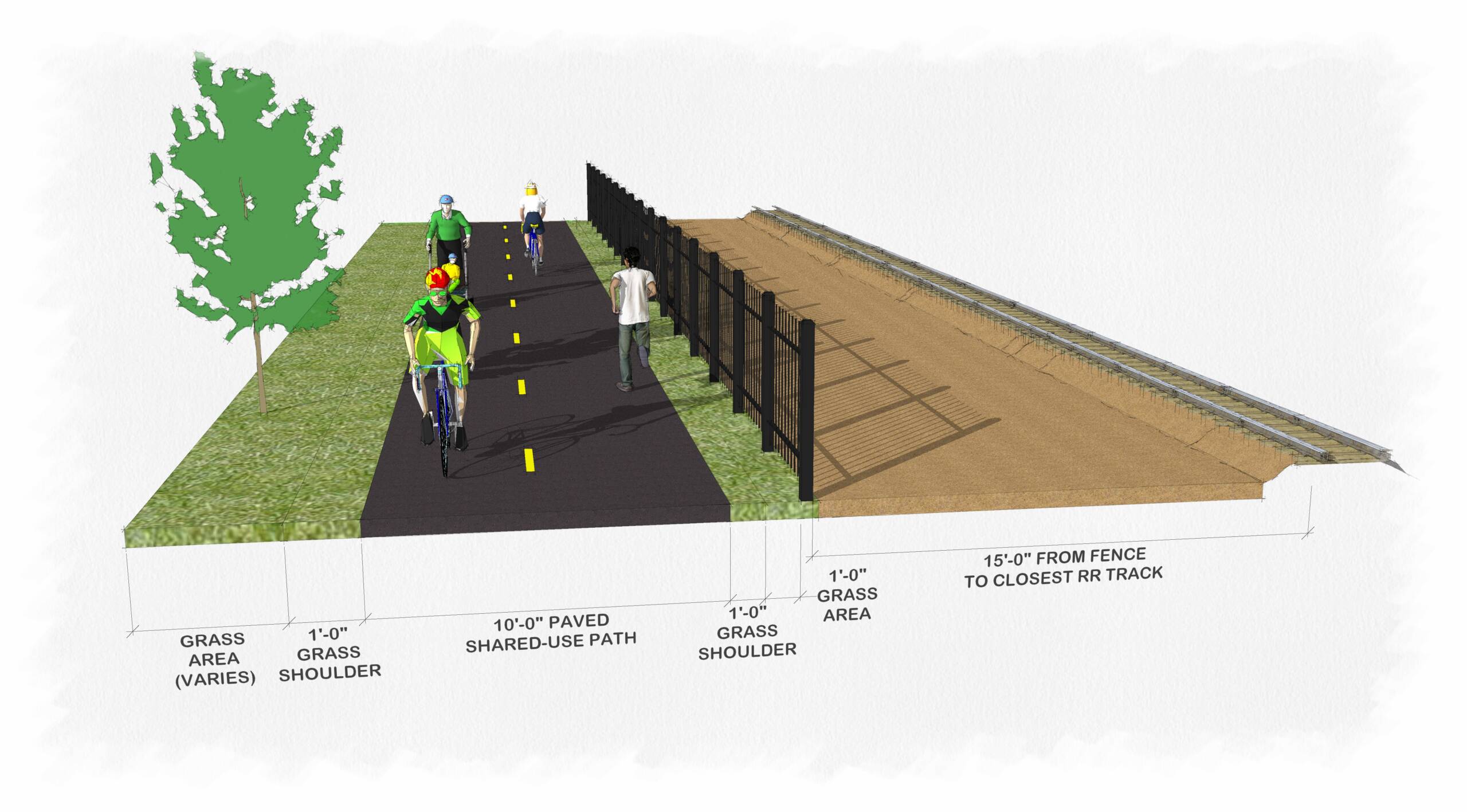

MANCHESTER, NH – Over the past two centuries, how we live, work and travel has changed immeasurably. Towns and cities have adapted to these changes over the years by upgrading, renewing, and implementing the infrastructure needed to deal with the evolving world that we live in – in fact, the necessity of progress often saw urban areas face two choices – progress or face being left behind.
Since the 1800s, Manchester’s geographical location saw it emerge as the hub for rail transportation in New England. The city’s industrial and manufacturing might, coupled with a favorable terrain, allowed a rail network to grow unobstructed across the region.
As transportation demands and habits have changed the exciting development and implementation of the rail trail and rails with trails concept has been happening across the United States since the late 1960s but really gathering pace over recent decades. Study after study has shown the economic, health and recreational improvements that these trails deliver to the local and wider community.
Currently, the Granite State Rail Trail, an almost contiguous 125-mile rail-trail that runs diagonally across New Hampshire from the Northwest corner to Salem with a 21-mile gap that excludes Manchester residents from enjoying the health and social benefits and increased economic activity that a rail trail will bring to the community. This 21-miles of little-used rail line can be converted to an active transportation corridor, a shared-use trail used for jogging, walking, and biking.
Unequivocally, both regional and city planning documents have confirmed that a rail with trail along the Merrimack River is the best path through Manchester.
Yet Manchester residents and the wider Manchester economy are still cut out of the opportunities of their rightful place on the rail trail.

Why is this happening?
Most likely a combination of unwillingness from the corporate ownership of the railroad to allow their right-of-way to include a safely built trail alongside and some rather antiquated thinking. The rail corridor was designated for transportation purposes, and not everyone is on board with the concept of non-motorized transport (bikes, e-bikes, etc.) qualifying as real transport. It’s very much looking at a 21st Century landscape through 19th Century eyes. Times have changed and residents aren’t having their needs met or even being offered the opportunity to have them met by decisions that make no practical or even financial sense.
Thankfully, as rail trails and rail with trails have been established for some years across the U.S., there is hard data to explain the missed benefits for Manchester residents and help clear up any misperceptions. Detailed information is provided on the Manchester Moves website – check it out at Manchestermoves.org
Let’s look at just three categories that make this point:
Health & Recreation
Access to convenient and free recreational and alternative off-road transportation space is an important factor for public health rates. Completing the missing 21-mile section of the Granite State Trail will not only connect Manchester to that trail, but also to the East Coast Greenway that connects 15 states and 450 cities and towns for 3,000 miles spanning from Maine to Florida. Additionally, alternative transportation use has a huge impact on air pollution and the health of our local environment.
The Manchester economy
Trails such as those being proposed bring visitors, both local and from out of town, and these visitors spend money. Many professional studies have been produced over the years to prove this point. Several of them are located on the Manchester Moves website – check it out at Manchestermoves.org
The Merrimack River is an overlooked and underused asset to our city that could be welcoming tourists throughout the year with a thriving economy built up alongside it, a hub for tourists and related businesses to help attract more people to the area.
Safety
It’s a frequently repeated misconception that there is any increased danger using rails with trails. Research flatly disproves that notion and, in fact, shows that the complete opposite is true. By providing a safe alternative cycling or walking route, removed from automobiles, injuries and fatalities can decrease dramatically. This alternative transport route will only benefit Manchester and help reduce road traffic accidents involving both pedestrians and cyclists.

What’s happening now – is Manchester any closer to getting on the trail?
Yes, after decades of deadlock, there is finally light at the end of the tunnel. The sticking point has always been the corporate ownership of the railroad. Since the early 1980s the railroad has been owned by Pan Am Railways which has been steadfast in its unwillingness to allow a rail trail to run adjacent to the freight line. Without approval from the railroad owners, the City of Manchester could not move ahead and so the project has been languishing ever since – until very recently.
In 2020, Pan Am put itself up for sale and in November 2020, CSX Transportation announced it had signed a definitive agreement to purchase Pan Am, which is now in its final stages.
Interest-based discussions between Manchester Moves, the City of Manchester and CSX have been incredibly positive, and CSX has indicated a willingness to partner with the city and make Manchester’s rail trail a reality.
The city and residents of Manchester have never been so close to achieving the multitude of benefits that come from a rail trail.
It’s an incredible opportunity for the city and that’s why it’s vital to have your voices heard and get the message out that Manchester deserves this.
So, what can you do to help Manchester get on the trail?
Help to spread the word. Not enough people know that Manchester is missing out on so much, and simply letting others know that this amazing opportunity is out there is a big step in the right direction.
Go to the Manchester Moves website, read more about the project to connect Manchester to the Granite State Rail Trail and sign up for the newsletter at Manchestermoves.org
Manchester Moves is a non-profit organization that is advocating for infrastructure change to get Manchester connected and moving. We’ve been active since 2008, advocating on behalf of the people of Manchester and southern New Hampshire to ensure that the area and its residents do not miss out on the huge opportunities and benefits of trails and greenways.
This is an exciting opportunity for Manchester, but we can’t do it alone. We need your help to build the case that transportation includes non-motorized forms of transport, and that Manchester deserves a brighter, healthier, and economically powerful future.
What’s the Route? View our interactive Story Map
What’s the Route Look Like?
Click here to tour the North-South route of the Manchester Rail with Trai via manchestermoves
Review the city’s 2021 Master Plan here.

